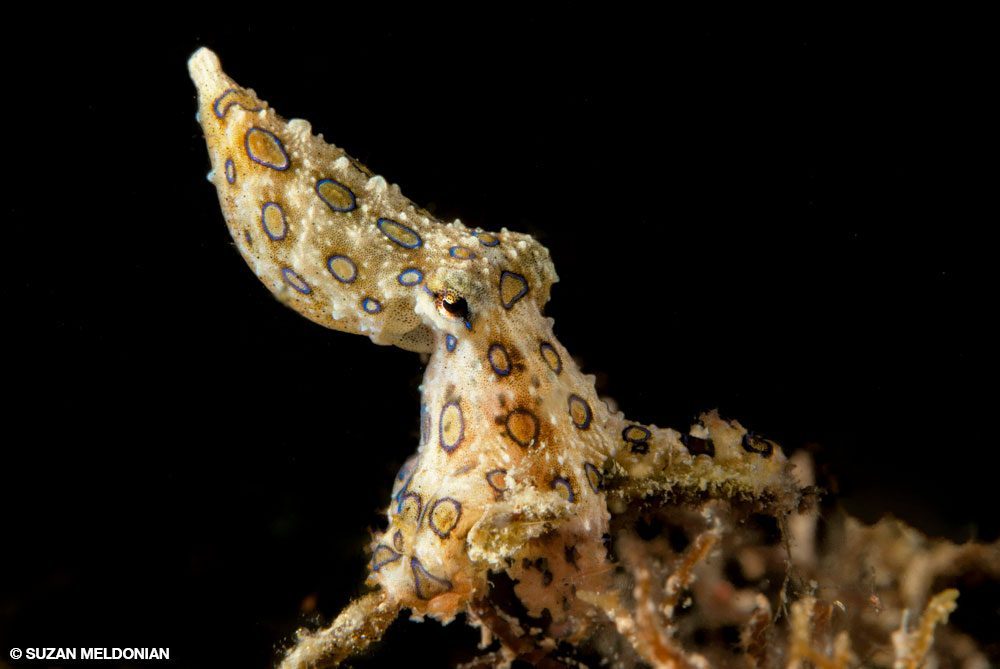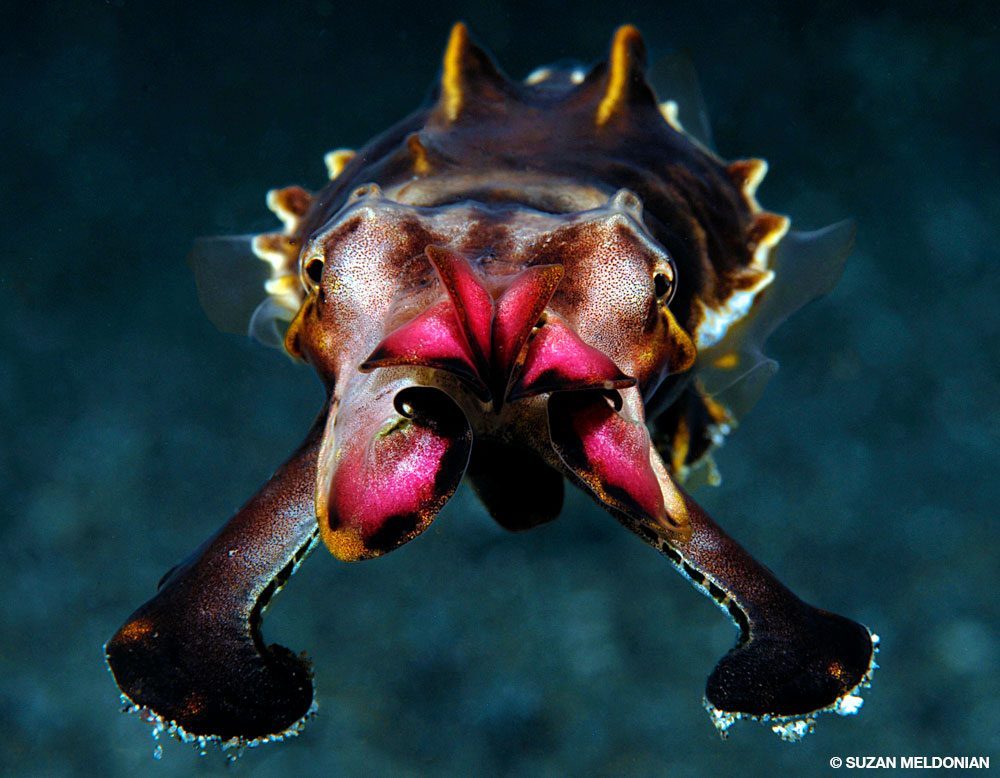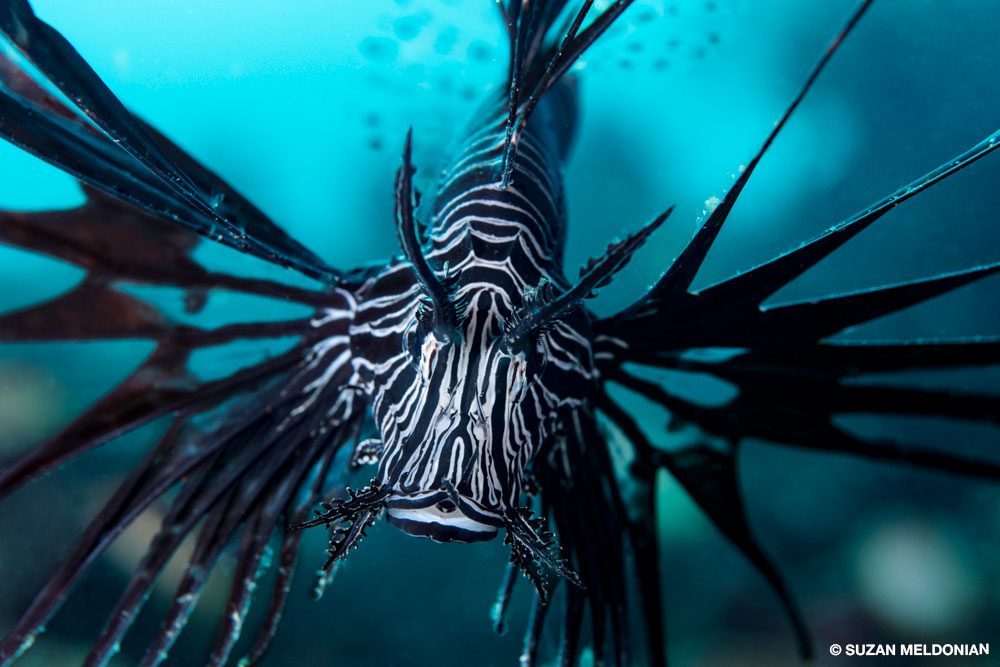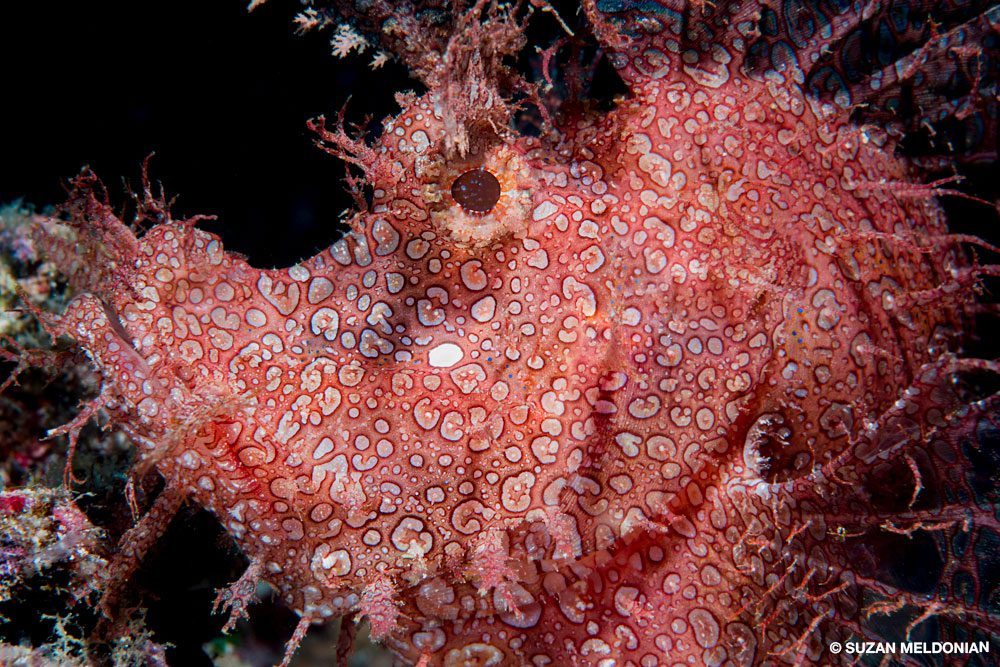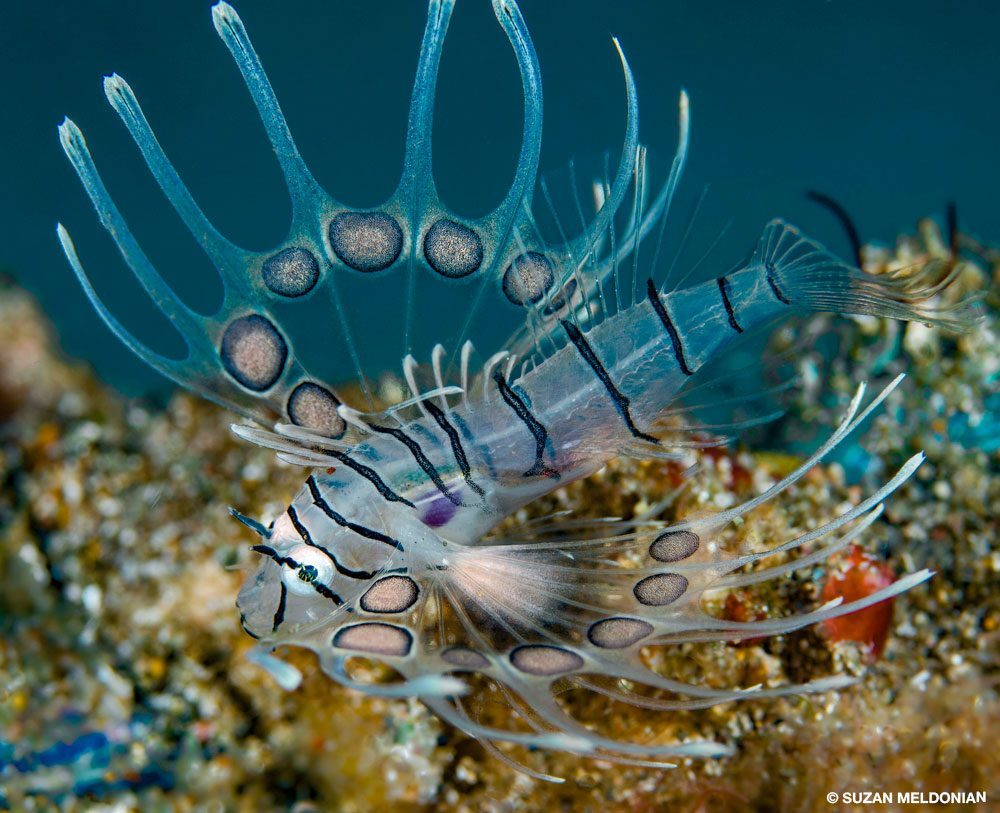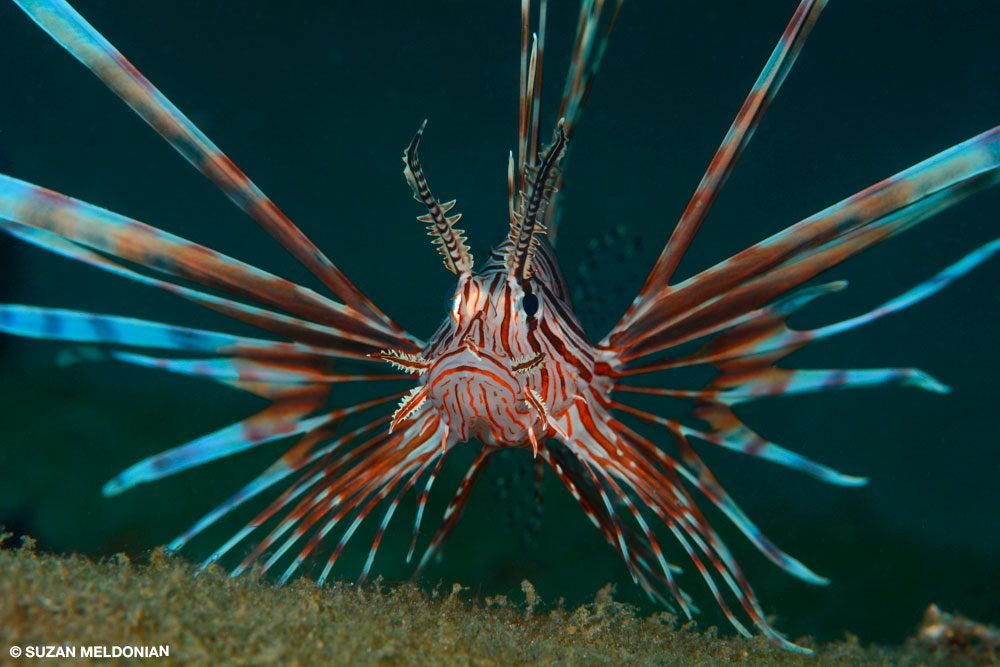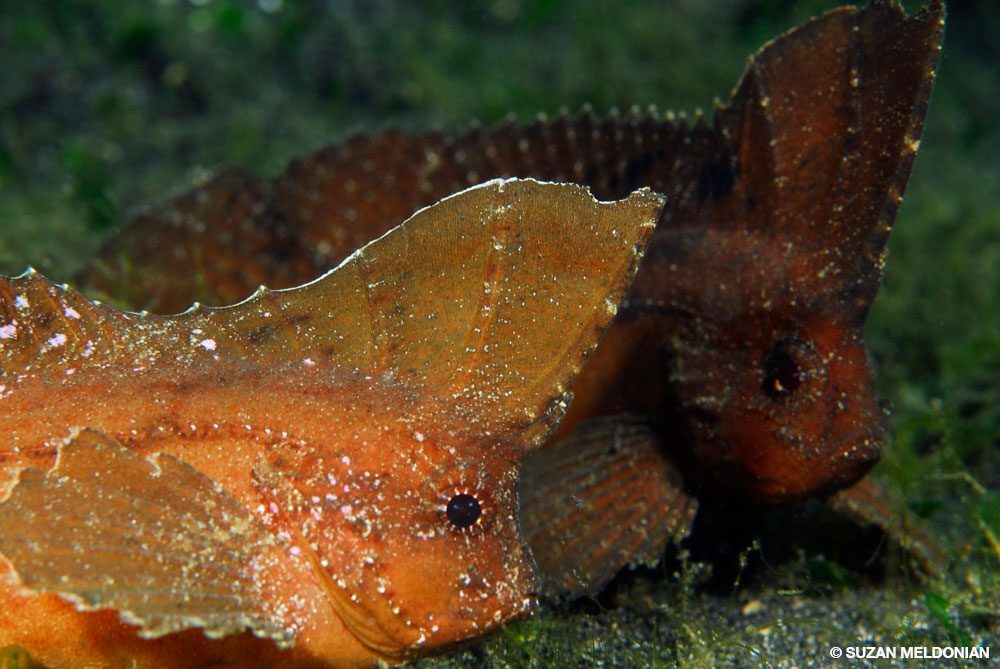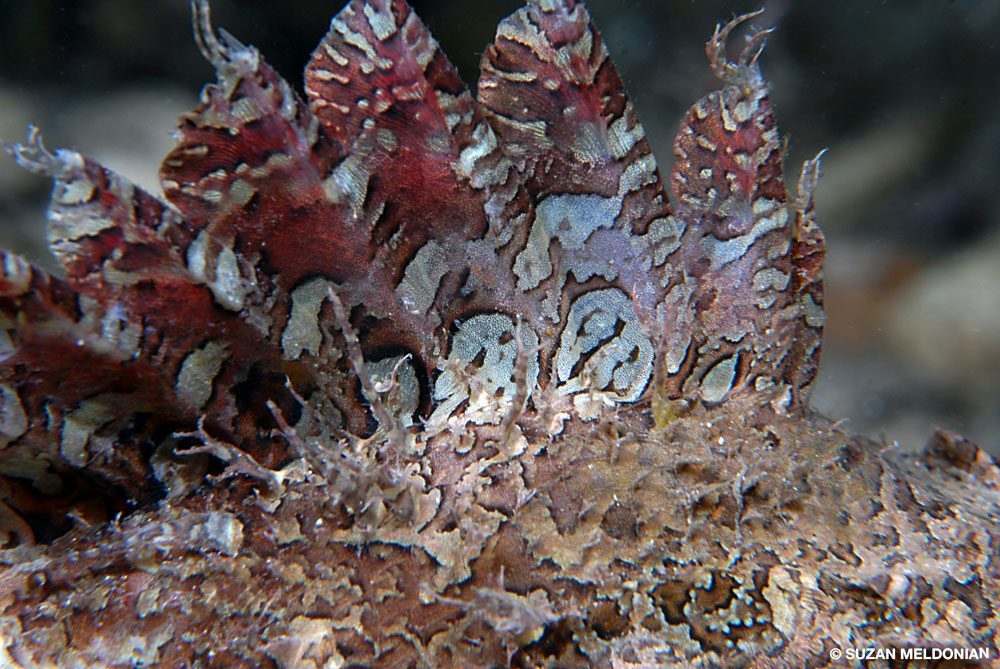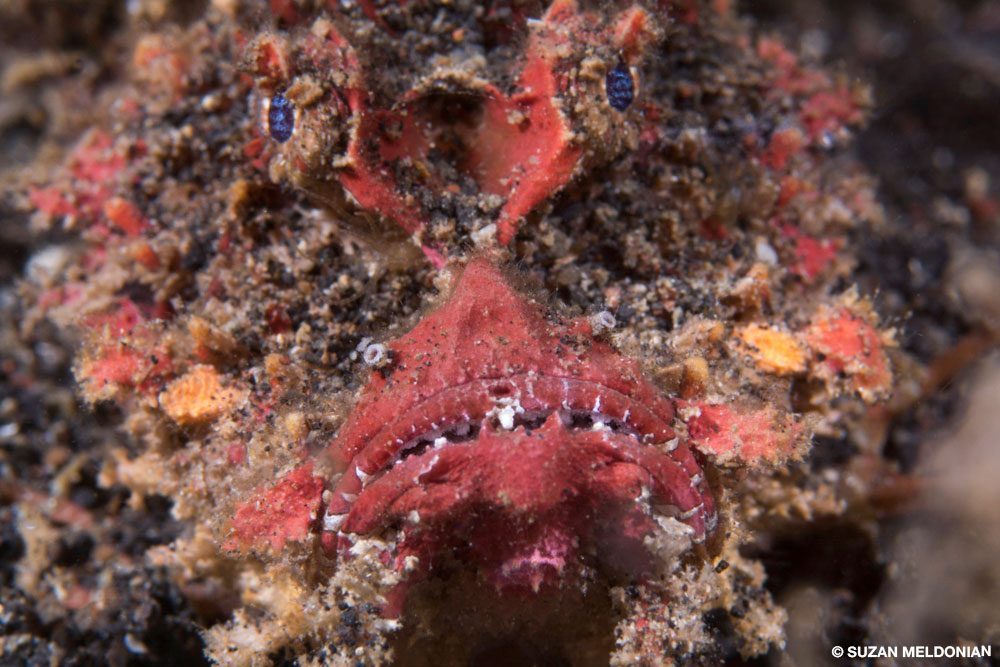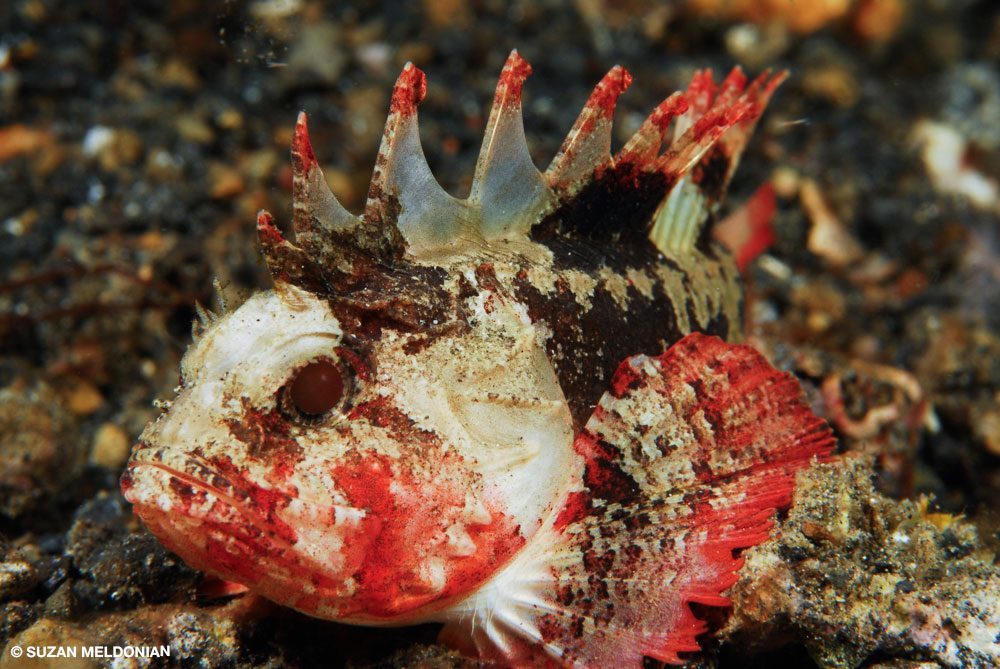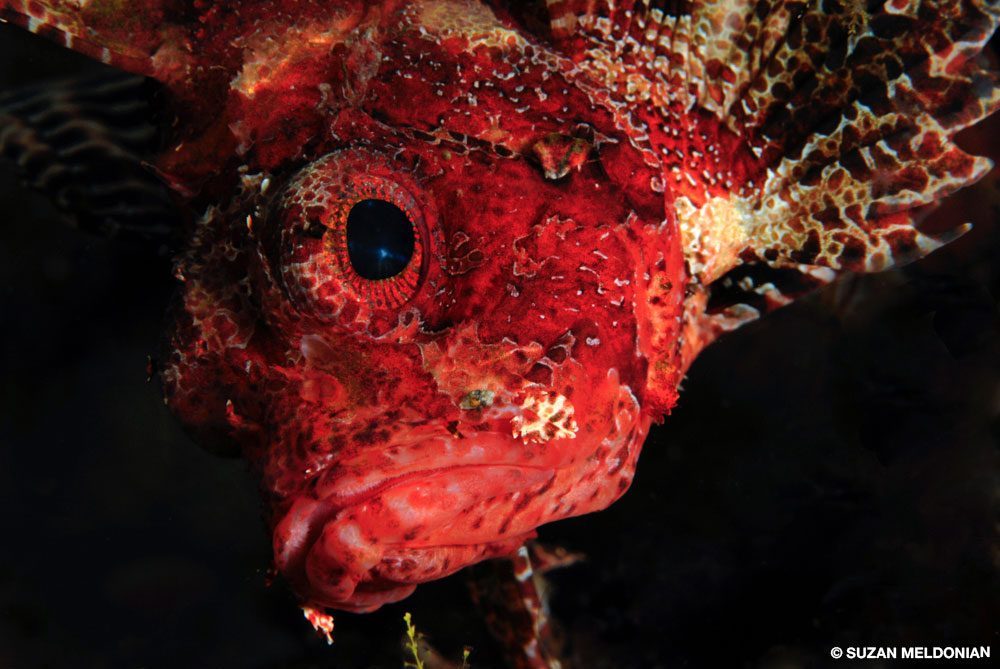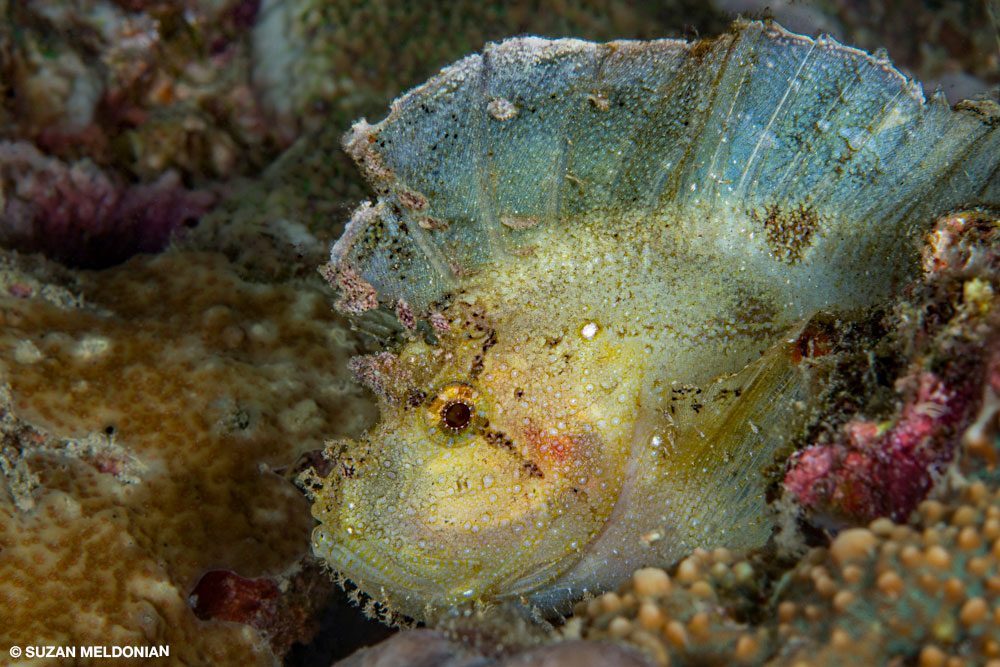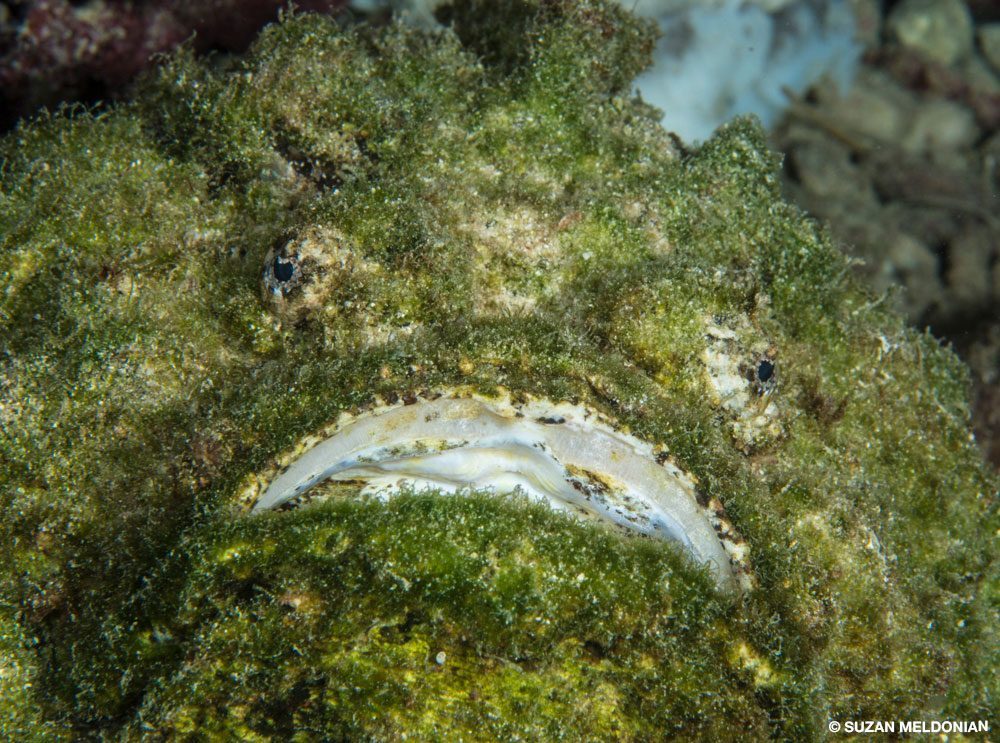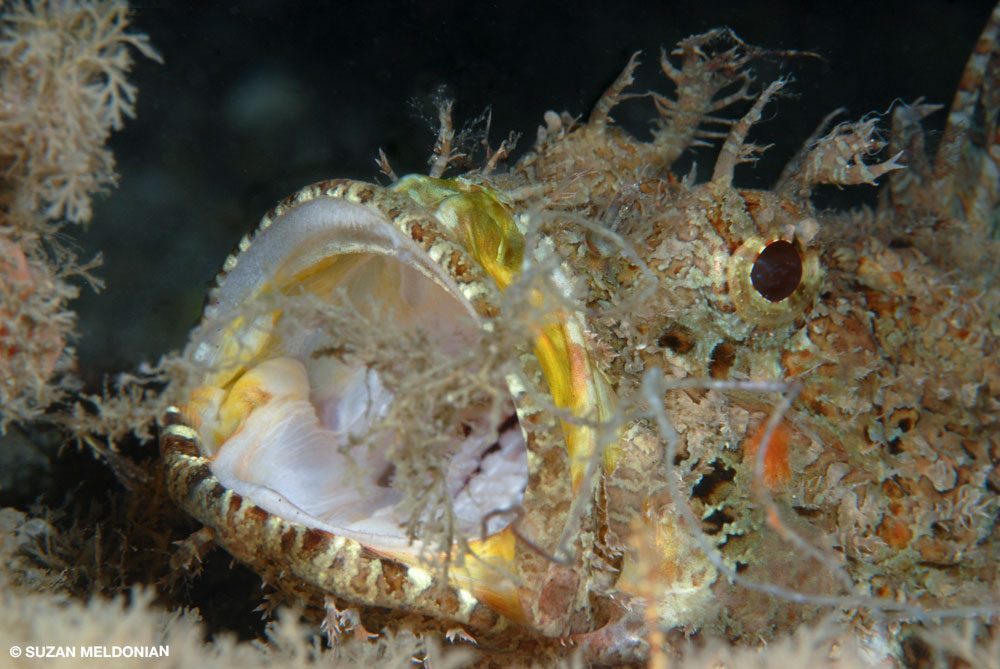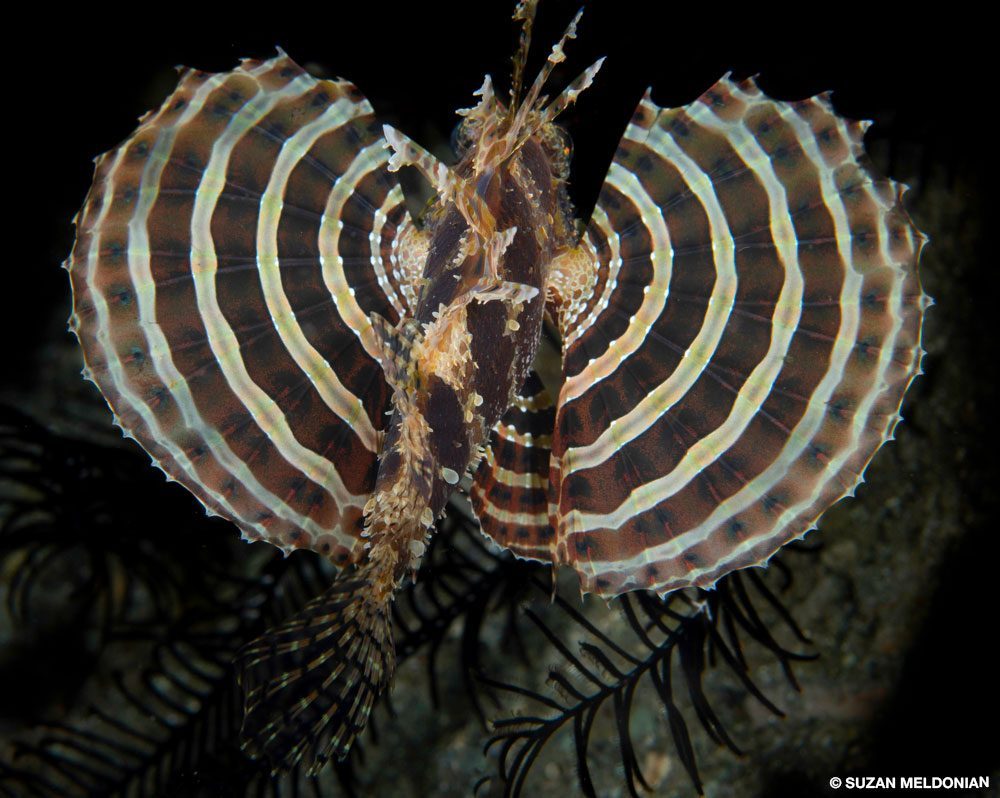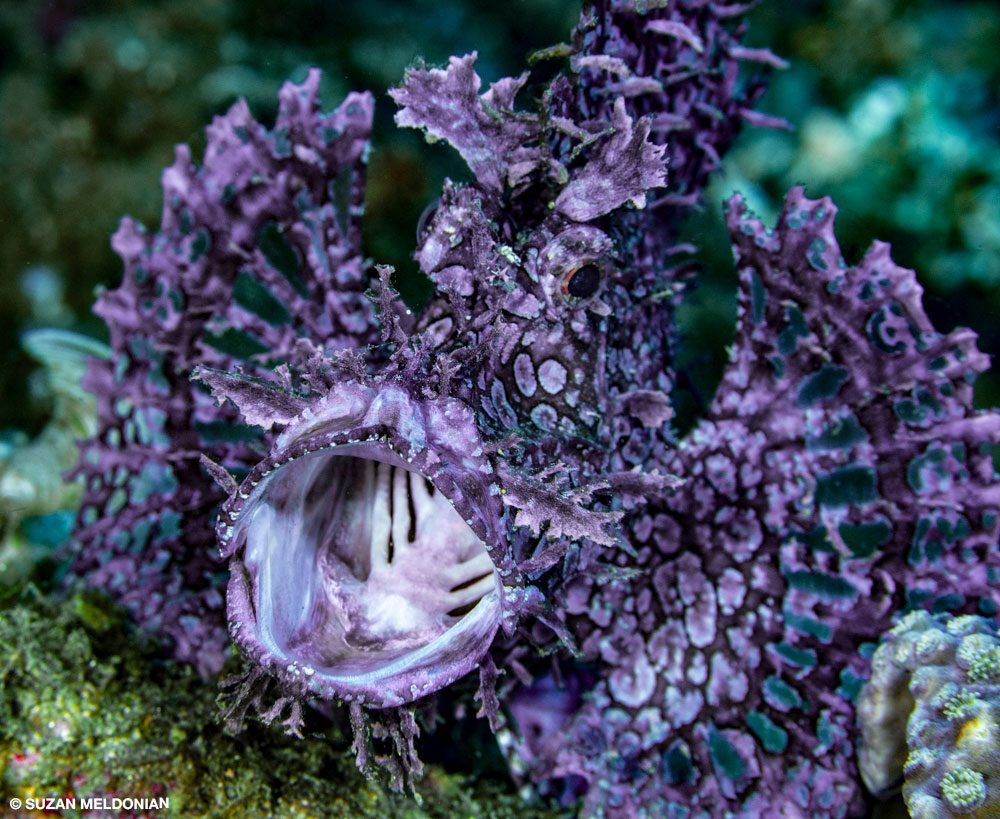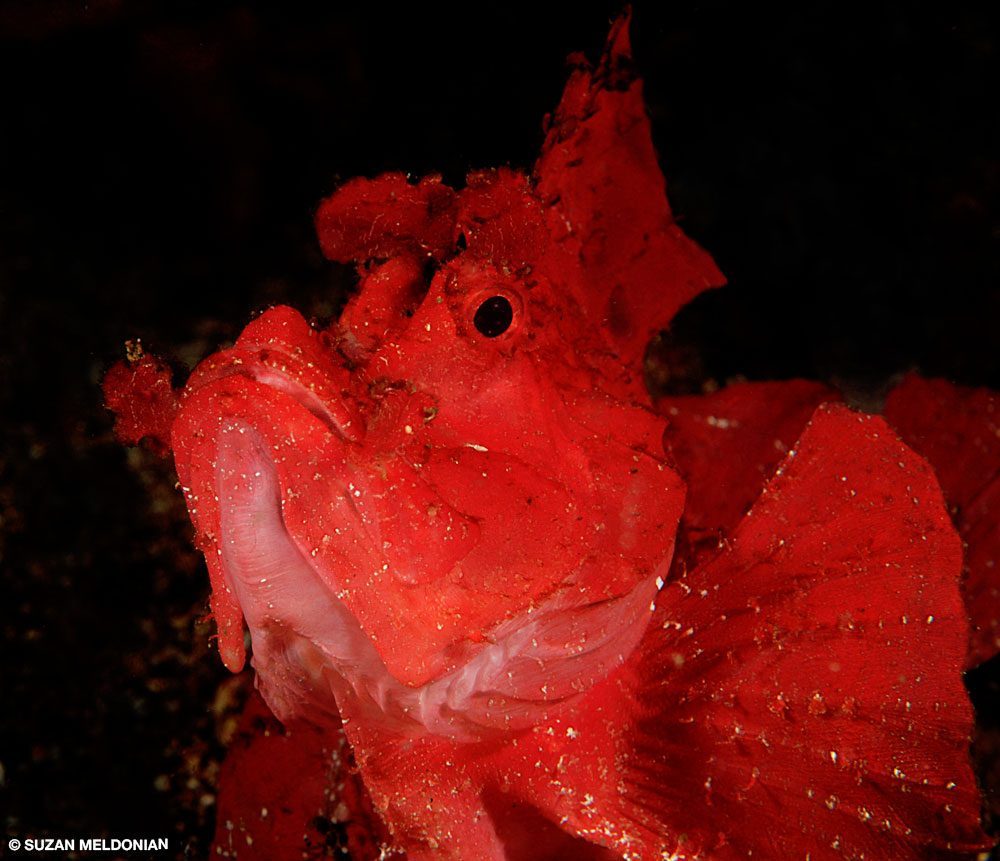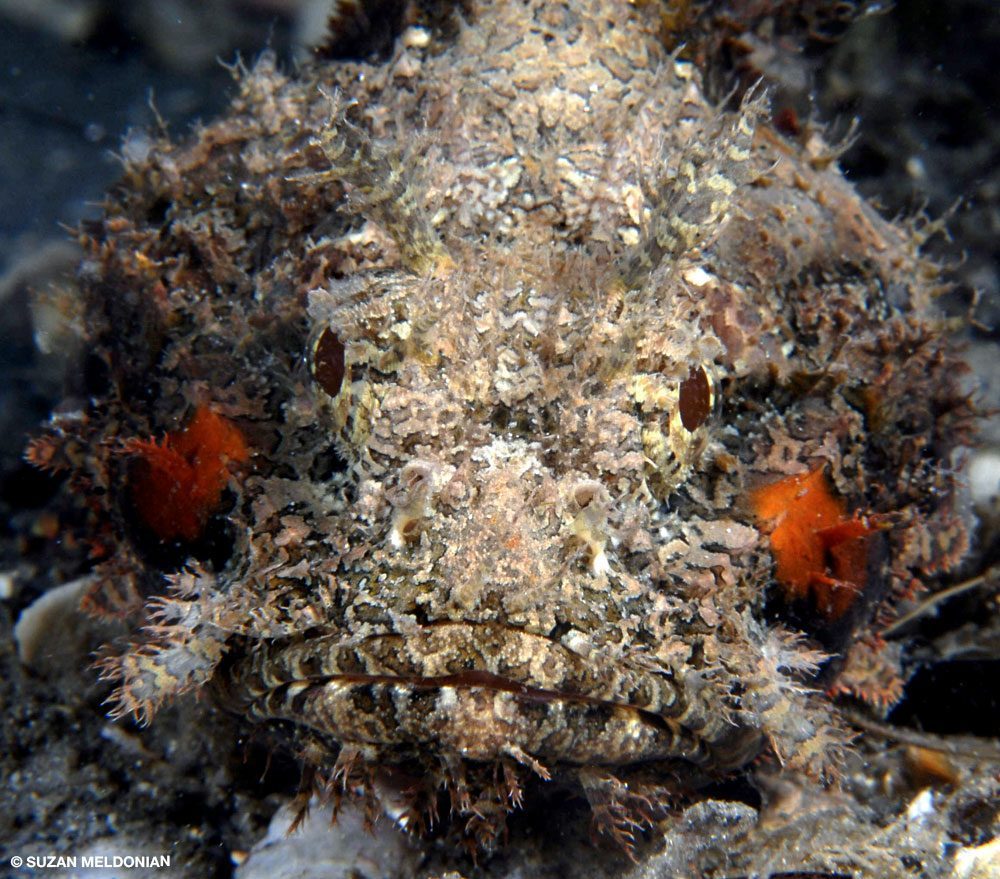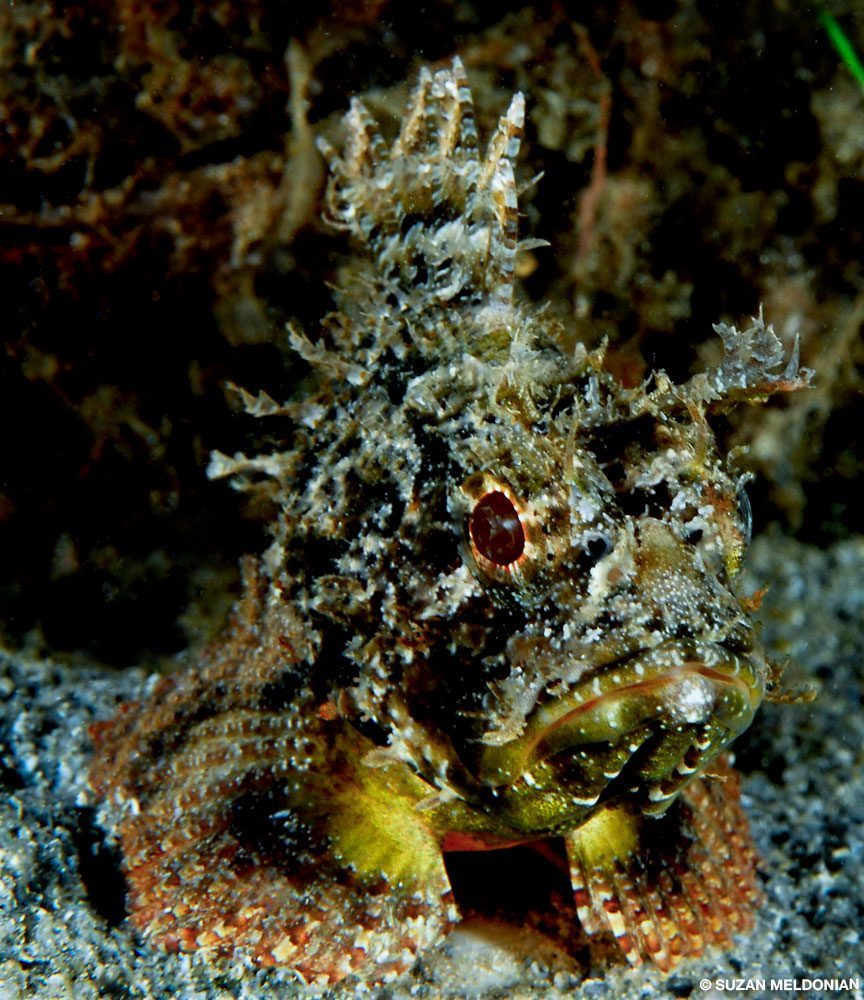The spiny devilfish (Inimicus didactylus) is a member of the family Scorpaenidae, which also contains the venomous lionfish, stonefish, and scorpionfish. These fish conceal glandular venom-producing daggers within their dorsal, pelvic, and anal fins. Divers — especially underwater photographers who may focus on one creature while others sidle up under their legs — must be aware of these animals’ subtle defense maneuvers.
While most scorpionfishes are ambush predators, the spiny devilfish is slightly different. It has a short temper and will guard its nest, spouse, or territory by attacking.
The spiny devilfish’s verrucotoxin (VTX) is a proteinaceous toxin that is potently poisonous to humans. It is a venomous animal — which delivers toxin through a sting or bite rather than by ingestion, inhalation, or absorption from a poisonous creature — and the spines along their back are the danger. Their toxin causes intense pain, respiratory weakness, cardiovascular system damage, and convulsions or paralysis. It can sometimes lead to death, depending on the sting location, the amount of toxin, and the body’s ability to defend itself.
While enjoying a recent dive in Anilao, Philippines, I set my buoyancy to hover about 6 feet (1.8 meters) off the bottom so I could get a shot of a millipede spider conch. I dropped my left hand to my side, and then it happened: Something sharp stabbed my thumb through my glove. I looked down in time to see a spiny devilfish swaggering back to the sand.
Within seconds a grueling ache resonated through my hand as the toxin immediately began spreading. I quickly snapped a photo of what stung me and then gave my camera to the dive guide. My thumb ached worse than anything I had ever experienced. I removed my glove and used its Velcro to scratch the injection point, hoping to dispel some of the toxin. I couldn’t risk going into respiratory failure underwater, so we ended the dive.
The dive guide said the pain should subside in about 45 minutes. I took an antihistamine from my kit, and the dive guides submerged my hand in a cup of near-boiling water and applied vinegar to break down the toxin. The hot water was my only relief, and when I removed my fingers from the water, they locked up at the joints. After 45 minutes, the pain suddenly ended.
We continued with an afternoon dive, and although my fingers were still swollen, the pain diminished at depth. When I surfaced, the pain picked up where it left off.
I woke up in the middle of the night in excruciating pain. Both hands were swollen to the size of softballs and throbbed incessantly. I couldn’t understand why both hands were swollen. Everyone else was asleep, so I helped myself to some ice, which only made it worse.
On the flight home 11 days later, the higher we went, the worse the pressure in my hands became. I showed the flight attendants my bulging fingers. Alarmed, they brought me a cup of ice, which I knew would do no good. I sank into my seat, knowing there would be no escape from the pain for the next 15 hours.
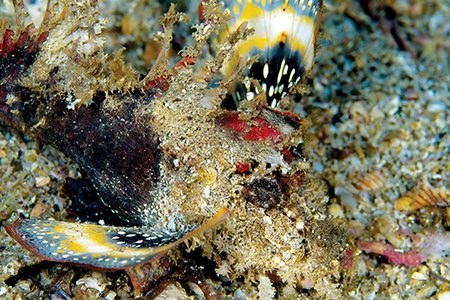
After I got home I saw a hand specialist who is also a seasoned diver. He diagnosed that my particular reaction was from carpal tunnel and trigger finger combined with the toxin. It would take six to eight weeks for the toxin to entirely leave my system. He prescribed a steroid since I was too swollen for a cortisone shot.
I mentioned that I had read you should get a tetanus shot, and he said that I should always have that vaccination up to date and that the toxin’s bacterial infection is similar to stepping on a rusty nail. The most effective treatment would have been a steroid along with a tetanus booster within 24 hours of the sting.
After three months of waiting, I still can’t feel my fingers, and I am trying various treatments. I don’t think I’ll ever know if the sting, lack of treatment, or both situations caused my permanent nerve damage.
I learned that you should familiarize yourself with dangerous sea life at your destination. Know how to identify it, what to avoid, and what to do in an emergency. Seek medical attention as soon as possible instead of trying to tough it out, because you don’t know how toxins will affect you. Always carry an antihistamine in your dive bag, and make sure your tetanus shot is up to date.
En savoir plus
See more hazardous marine life in this photo gallery and video.
© Alert Diver — Q1 2024
